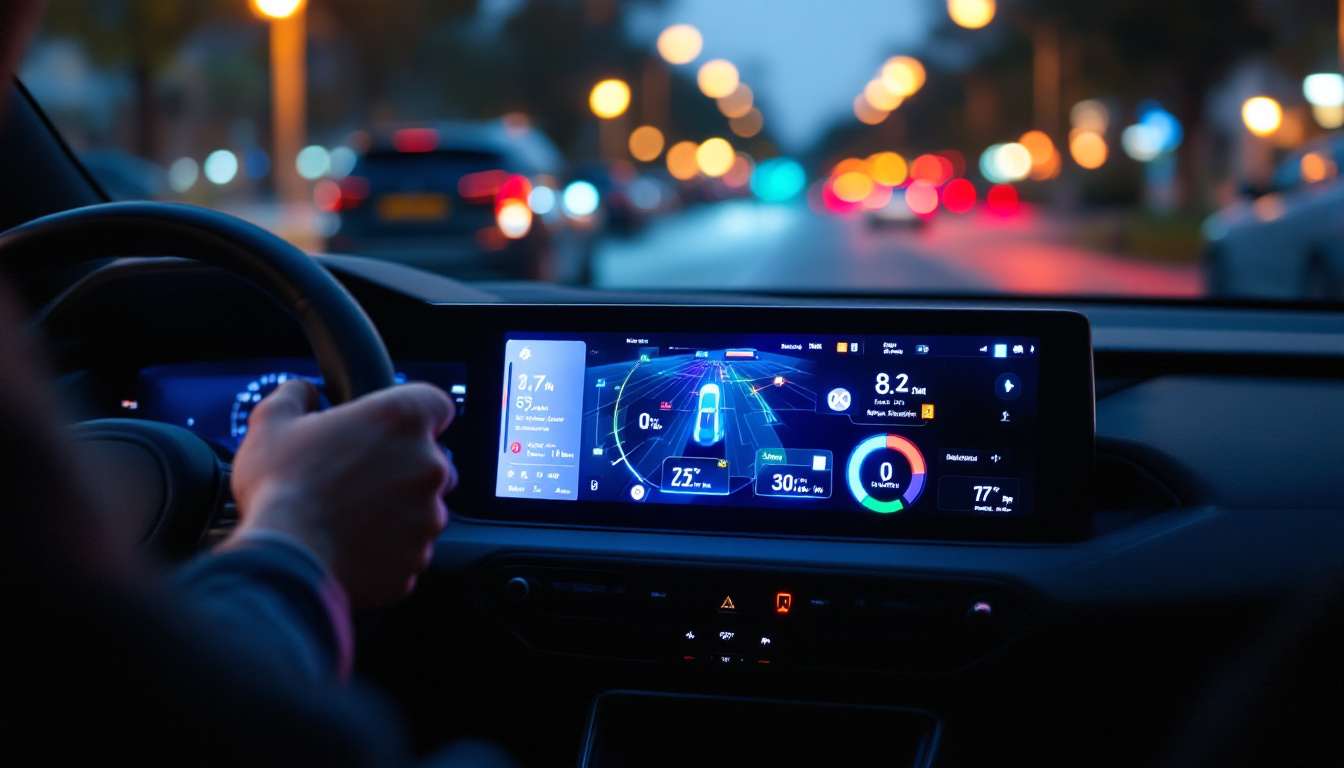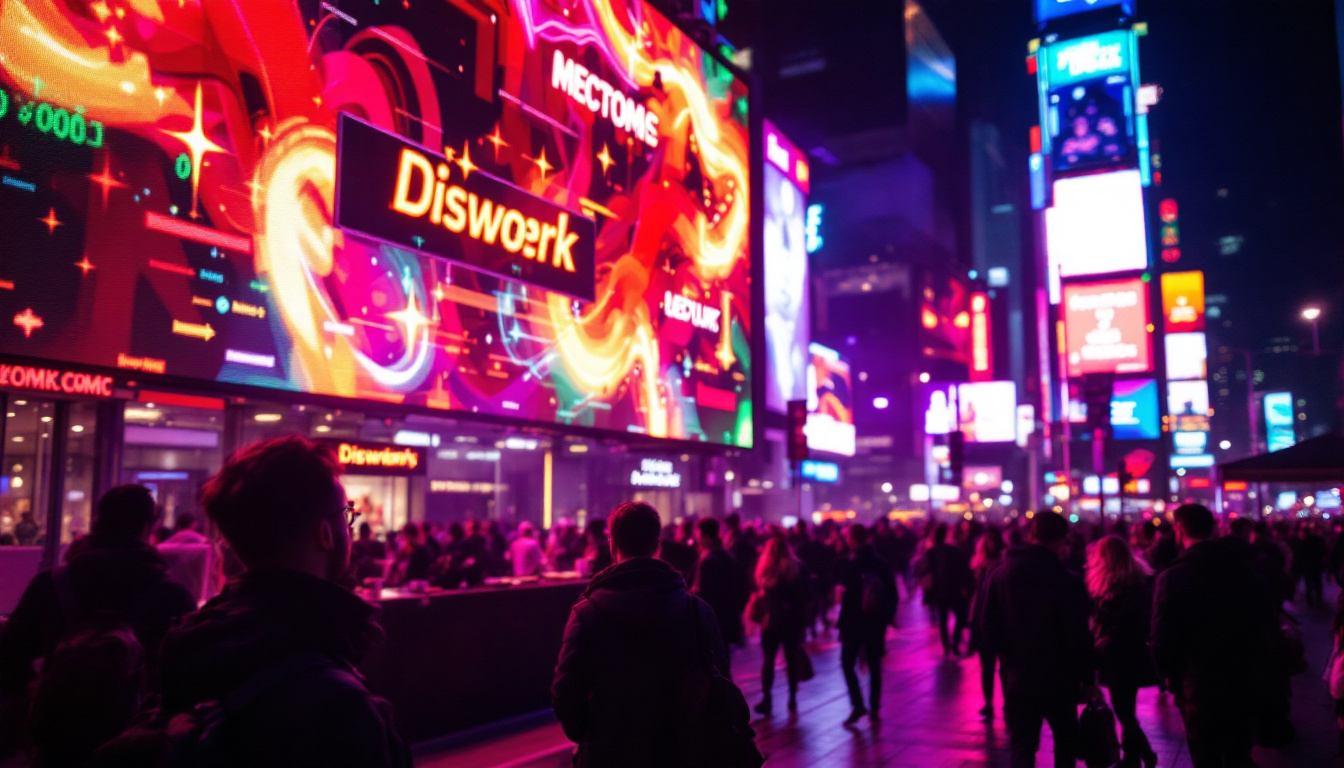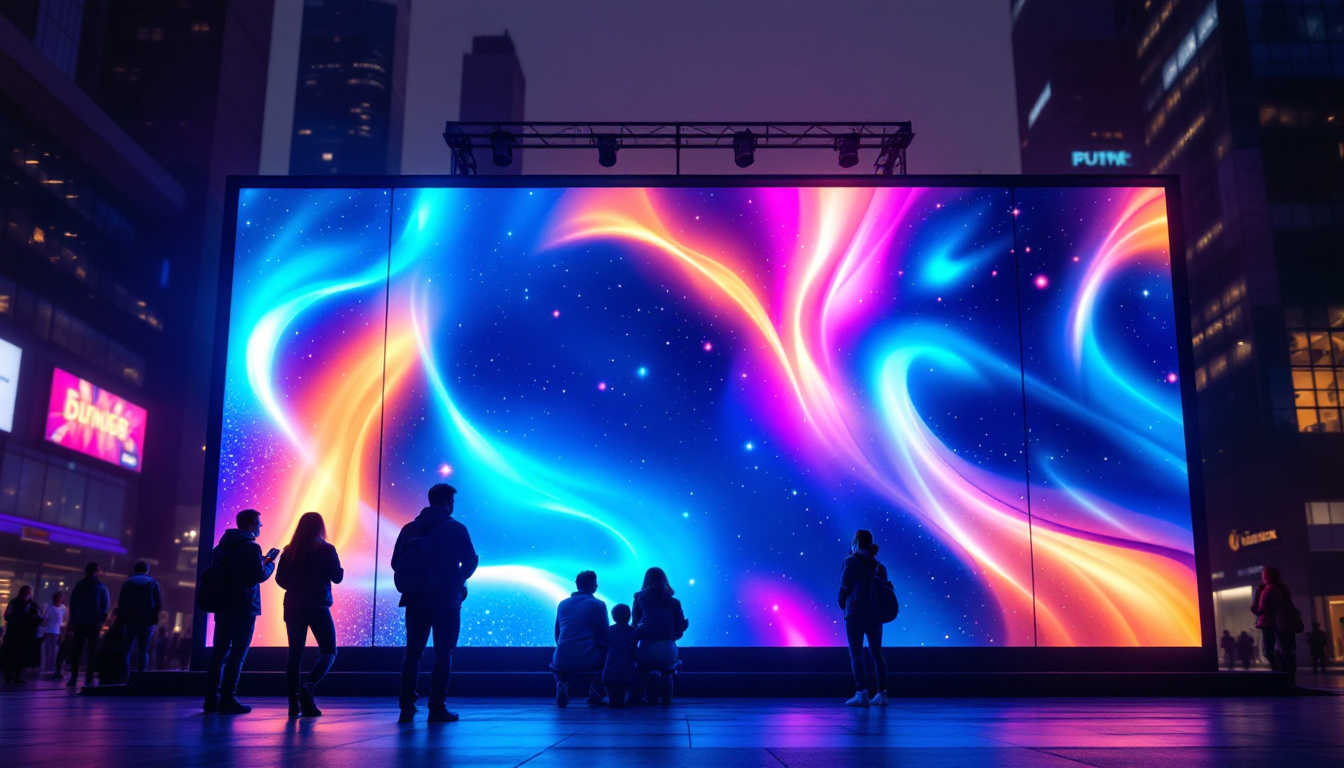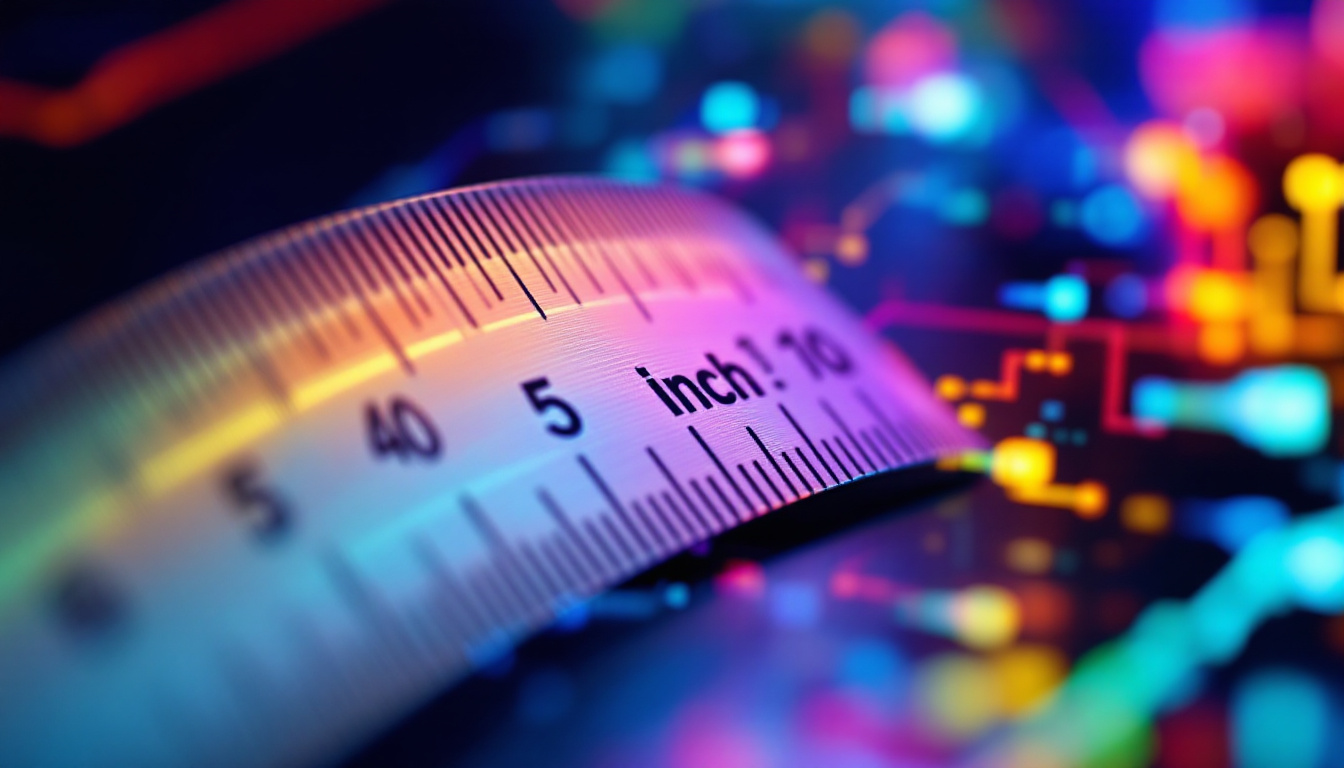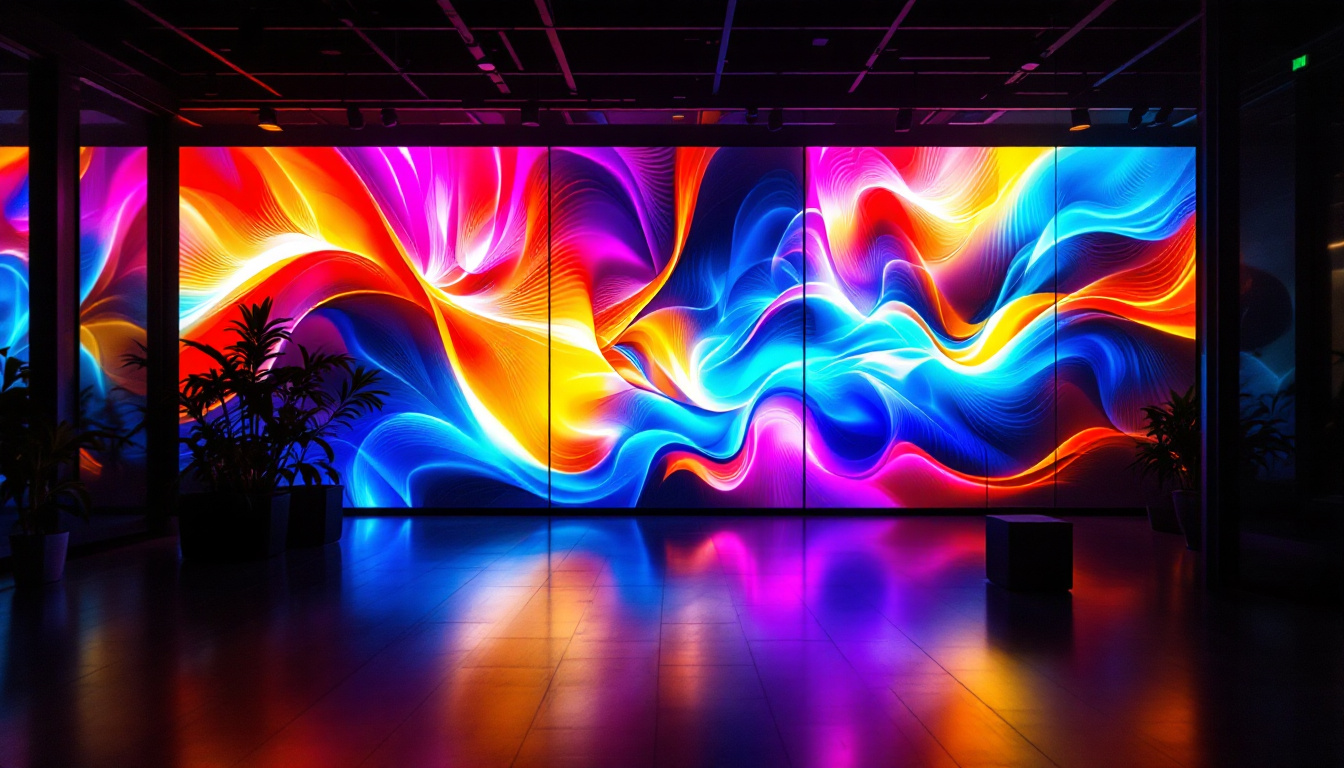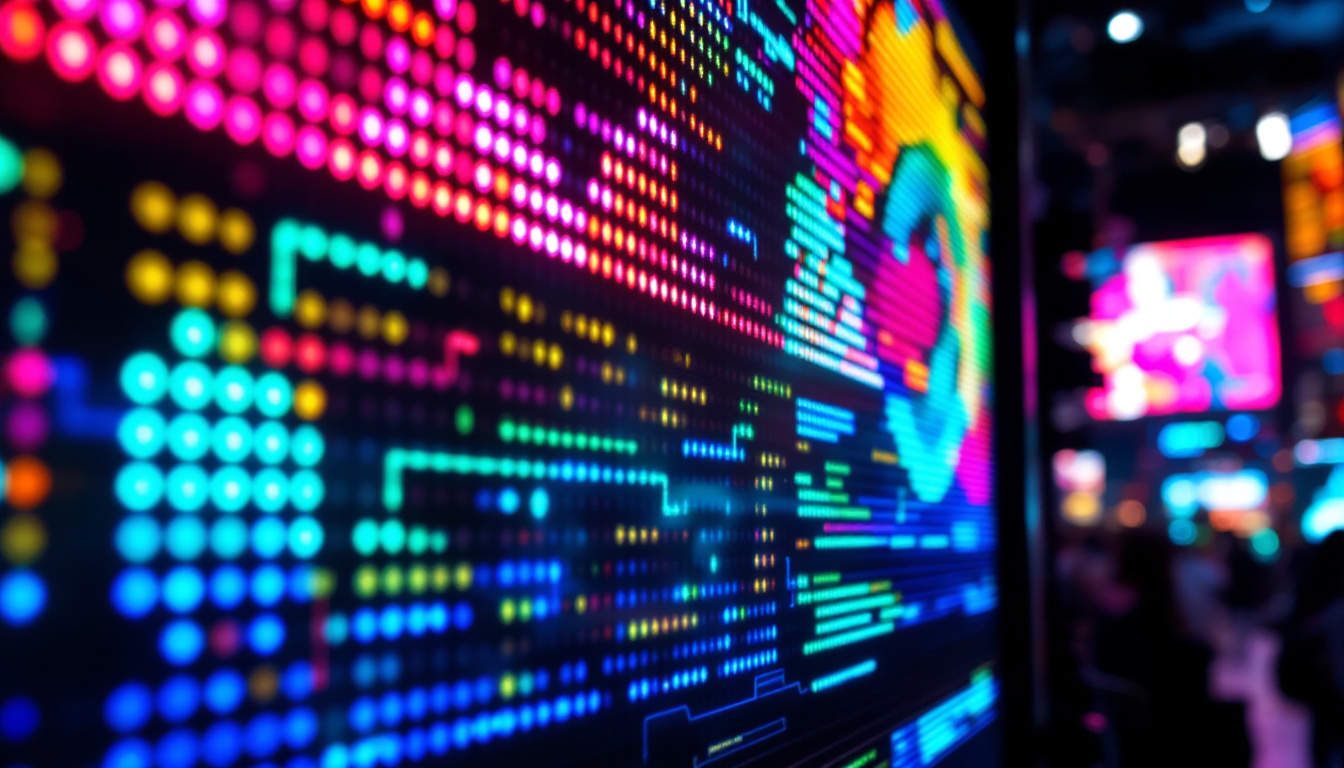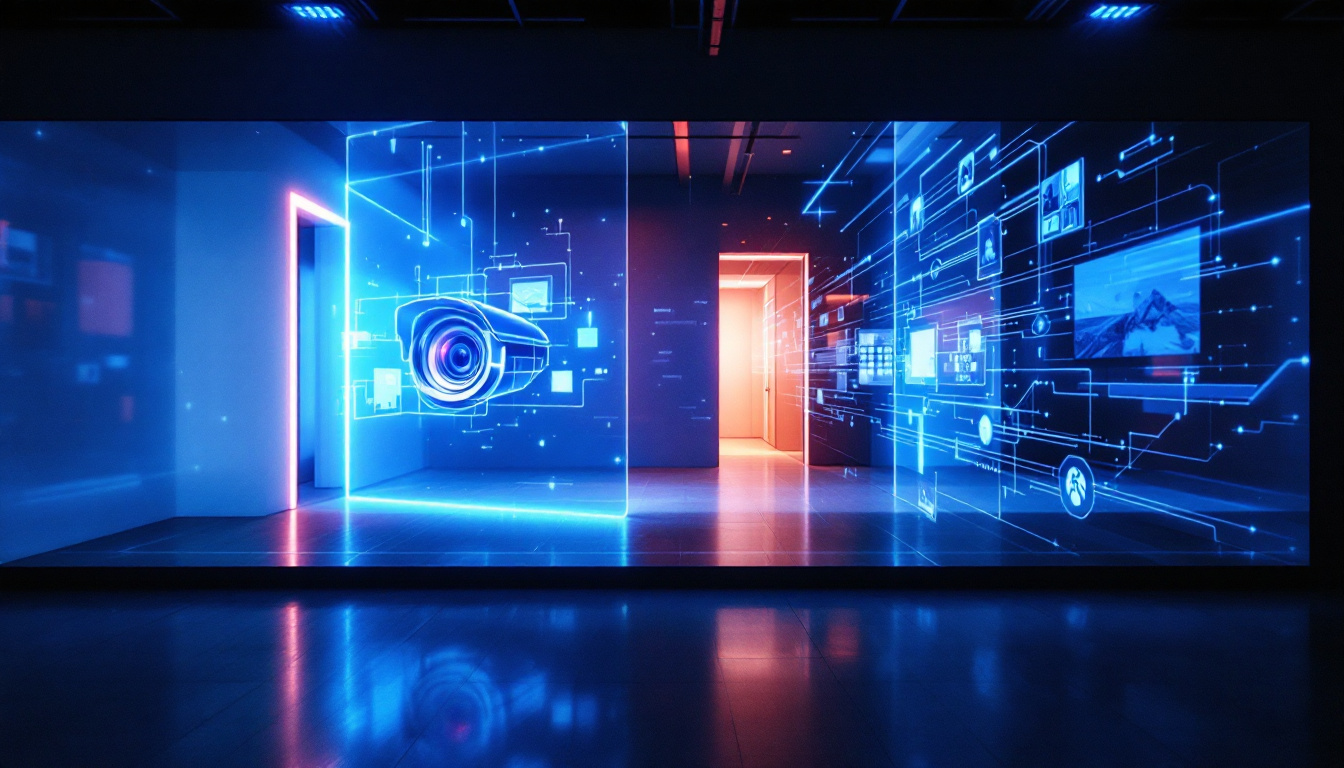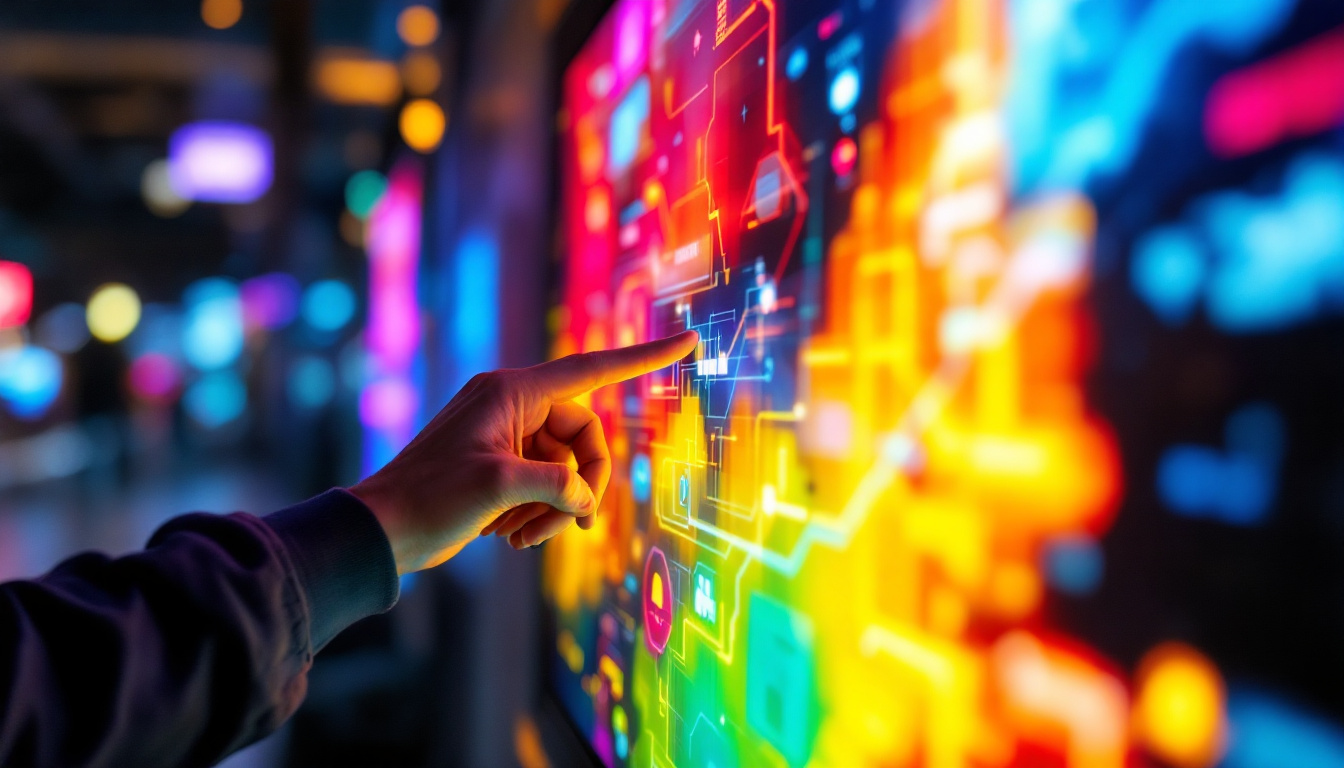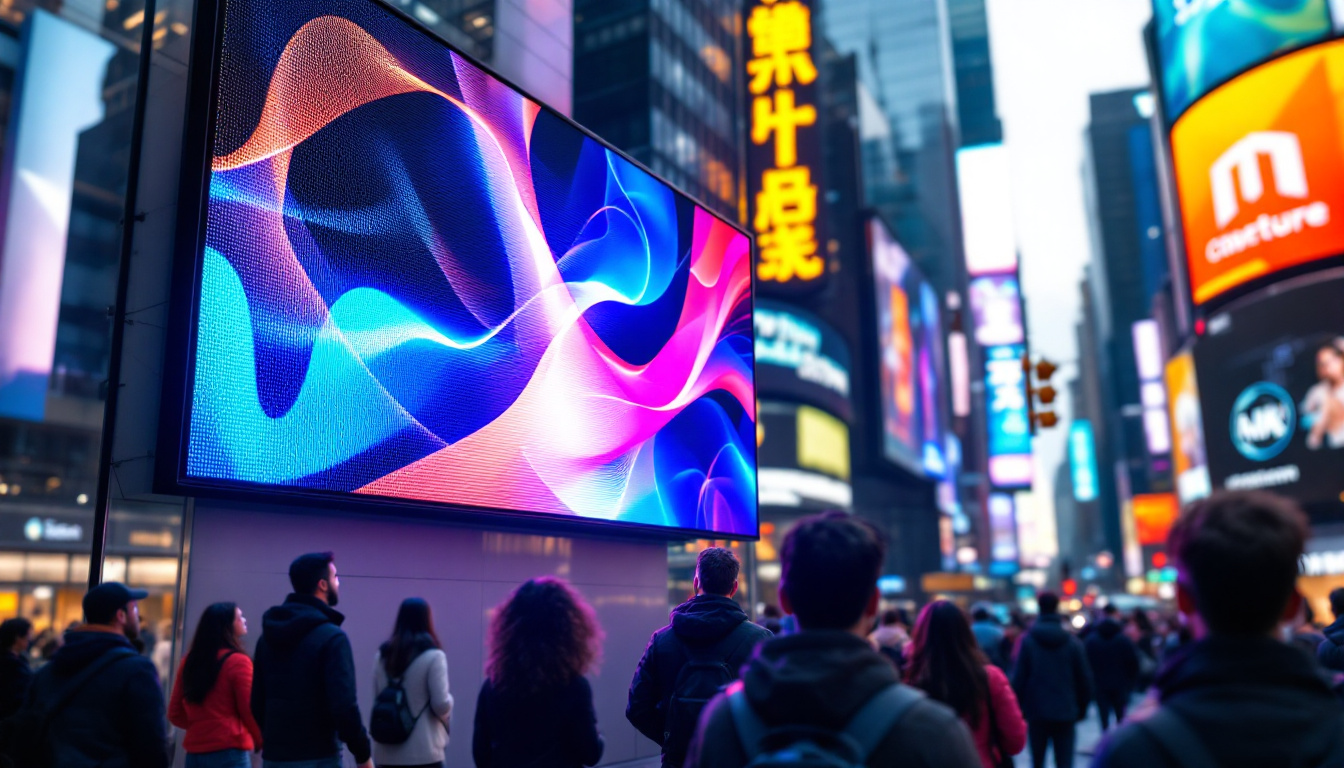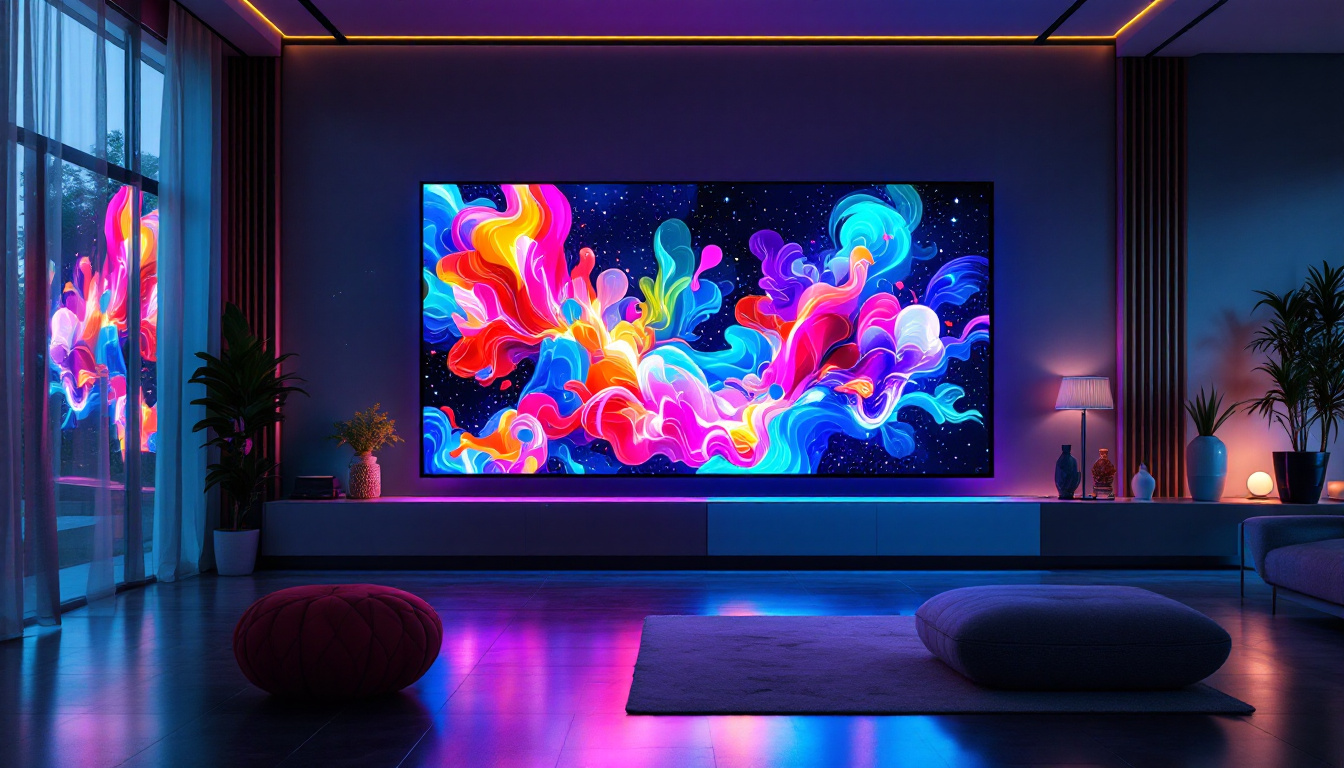The automotive industry has witnessed a remarkable transformation in recent years, particularly with the integration of advanced technology into vehicles. One of the most significant advancements is the car digital display, specifically the LED display. This technology not only enhances the aesthetic appeal of vehicles but also improves functionality and user experience. This article delves into the intricacies of LED displays in cars, exploring their types, advantages, and future trends.
Understanding LED Technology
Light Emitting Diodes (LEDs) have revolutionized the way information is displayed in various applications, including automotive design. Unlike traditional incandescent bulbs, LEDs are semiconductor devices that emit light when an electric current passes through them. This fundamental difference allows LEDs to offer several advantages, making them a popular choice for car displays. Their compact size, energy efficiency, and longevity significantly enhance the overall functionality and aesthetics of modern vehicles, contributing to a more streamlined design and reduced energy consumption.
In addition to their practical benefits, LEDs also enable manufacturers to innovate in terms of design. The ability to create displays that are thinner and lighter than traditional lighting systems opens up new possibilities for interior layouts and dashboard configurations. Furthermore, the rapid response time of LEDs allows for dynamic displays that can change in real-time, providing drivers with up-to-date information and enhancing the overall driving experience.
How LEDs Work
At the core of LED technology is the principle of electroluminescence. When electrons recombine with holes within the device, energy is released in the form of photons, producing light. The color of the light emitted depends on the materials used in the semiconductor. This versatility allows manufacturers to create displays in a variety of colors and brightness levels, catering to different design needs. Moreover, advancements in LED technology have led to the development of RGB (Red, Green, Blue) LEDs, which can produce a wide spectrum of colors by adjusting the intensity of each individual color component, further enhancing the visual appeal of automotive displays.
Additionally, the efficiency of LEDs contributes to the overall performance of vehicles. Since they consume less power than traditional lighting solutions, they help reduce the load on the vehicle’s electrical system, which can lead to improved fuel efficiency. This energy savings is particularly beneficial in electric and hybrid vehicles, where every watt counts towards maximizing range. The durability of LEDs also means they are less likely to fail, which translates to lower maintenance costs and increased reliability for drivers.
Types of LED Displays in Cars
LED displays in vehicles can be categorized into several types, each serving distinct purposes. The most common types include:
- Instrument Cluster Displays: These are located behind the steering wheel and provide essential information such as speed, fuel level, and engine temperature. Their customizable nature allows for various layouts and designs, enabling manufacturers to create a unique look that aligns with the vehicle’s branding.
- Infotainment Displays: Positioned in the center console, these screens serve as the hub for navigation, media playback, and connectivity features. Many modern infotainment systems now integrate touch capabilities and voice recognition, allowing for a more intuitive user experience while minimizing distractions.
- Head-Up Displays (HUD): These project important information onto the windshield, allowing drivers to access data without taking their eyes off the road. This technology not only enhances safety but also allows for a more futuristic driving experience, as HUDs can display navigation prompts, speed limits, and even incoming call notifications directly in the driver’s line of sight.
Beyond these common types, LED technology is also being utilized in advanced driver-assistance systems (ADAS). For example, adaptive lighting systems use LEDs to adjust the brightness and direction of headlights based on driving conditions, improving visibility and safety at night. Additionally, LED matrix displays can be employed for turn signals and brake lights, allowing for more dynamic signaling that can enhance communication with other drivers on the road.
Advantages of LED Displays in Vehicles
LED displays offer numerous benefits that enhance both functionality and user experience in vehicles. Understanding these advantages can provide insights into why this technology has become the standard in modern automotive design.
Brightness and Visibility
One of the primary advantages of LED displays is their exceptional brightness. LEDs can produce vivid colors and high contrast ratios, making information easily readable in various lighting conditions, whether it be bright sunlight or low-light environments. This feature is particularly crucial for instrument clusters and HUDs, where clarity is paramount for safe driving.
Energy Efficiency
LED technology is known for its energy efficiency. Compared to traditional display technologies, LEDs consume significantly less power, which can contribute to improved fuel efficiency in vehicles. This is especially important as manufacturers strive to create more eco-friendly cars. The reduced energy consumption also leads to less heat generation, which can enhance the longevity of the display components.
Durability and Longevity
LED displays are built to withstand the rigors of automotive environments. They are resistant to shocks, vibrations, and temperature fluctuations, making them more durable than traditional displays. This resilience translates to a longer lifespan, reducing the need for replacements and maintenance, which can be costly for both manufacturers and consumers.
Applications of LED Displays in Modern Vehicles
As technology continues to advance, the applications of LED displays in vehicles are expanding. From enhancing driver information to providing entertainment options, these displays play a crucial role in the overall driving experience.
Driver Assistance Systems
Many modern vehicles are equipped with advanced driver assistance systems (ADAS) that rely on LED displays to communicate crucial information to drivers. For instance, alerts for lane departure, collision warnings, and navigation prompts are often displayed on instrument clusters or HUDs. This integration improves situational awareness and helps drivers make informed decisions on the road.
Infotainment and Connectivity
LED displays are central to the infotainment systems found in contemporary vehicles. These screens facilitate connectivity with smartphones, allowing drivers and passengers to access music, navigation, and communication apps seamlessly. The intuitive interfaces provided by LED displays enhance user interaction, making it easier to control various features without distraction.
Customization and Personalization
Another exciting application of LED displays is the ability to customize and personalize the driving experience. Many modern vehicles allow drivers to choose different themes, colors, and layouts for their displays. This level of customization not only enhances the aesthetic appeal but also allows drivers to tailor the information presented to their preferences, creating a more engaging driving environment.
The Future of LED Displays in Automotive Technology
As the automotive industry continues to evolve, the role of LED displays is expected to grow even further. Emerging technologies and trends are set to shape the future of these displays, enhancing their functionality and integration into vehicles.
Integration with Augmented Reality
One of the most exciting developments on the horizon is the integration of LED displays with augmented reality (AR). AR technology has the potential to overlay digital information onto the real world, providing drivers with real-time data without obstructing their view of the road. For example, navigation directions could be projected onto the road itself, guiding drivers more intuitively.
Increased Connectivity and Smart Features
The rise of connected vehicles is another trend that will influence the future of LED displays. As vehicles become more integrated with the Internet of Things (IoT), displays will serve as central hubs for accessing a wide range of smart features. This could include vehicle diagnostics, remote control of certain functions, and even interaction with smart home devices.
Enhanced User Experience through AI
Artificial intelligence (AI) is poised to play a significant role in the evolution of LED displays in cars. By analyzing driver behavior and preferences, AI can tailor the information presented on displays, optimizing the user experience. For instance, the system could prioritize alerts and notifications based on driving conditions or personal habits, ensuring that drivers receive the most relevant information at the right time.
Challenges and Considerations
While LED displays offer numerous advantages, there are also challenges and considerations that manufacturers must address. Understanding these challenges is essential for the continued advancement of this technology in the automotive sector.
Cost of Implementation
Implementing LED display technology can be costly for manufacturers, particularly for high-resolution screens and advanced features. Balancing the cost of production with consumer pricing is a critical consideration. As technology advances and production processes improve, it is expected that costs will decrease, making LED displays more accessible in a broader range of vehicles.
Driver Distraction
Another concern associated with LED displays is the potential for driver distraction. With the increasing amount of information presented on screens, there is a risk that drivers may become overwhelmed or distracted while trying to access data. Manufacturers must prioritize user interface design to ensure that displays are intuitive and minimize distractions, allowing drivers to focus on the road.
Environmental Impact
As with any technology, the environmental impact of LED displays is a consideration. While LEDs are generally more energy-efficient than traditional displays, the production and disposal of electronic components can have ecological consequences. Manufacturers are increasingly seeking sustainable practices in production and recycling to mitigate these impacts, contributing to a greener automotive industry.
Conclusion
LED displays have become an integral part of modern automotive design, offering numerous benefits that enhance both functionality and user experience. From improving visibility and energy efficiency to enabling advanced driver assistance systems, the applications of LED technology in vehicles are vast and varied. As the automotive industry continues to evolve, the future of LED displays promises even more innovative features, including augmented reality integration, increased connectivity, and AI-driven customization.
While challenges such as cost, driver distraction, and environmental impact remain, the ongoing advancements in technology and design are paving the way for a more efficient and user-friendly driving experience. As consumers increasingly demand smarter and more connected vehicles, LED displays will undoubtedly play a pivotal role in shaping the future of automotive technology.
Explore the Future of Automotive LED Displays with LumenMatrix
Ready to experience the cutting-edge of vehicle LED display technology? LumenMatrix is at the forefront of innovation, offering a wide array of LED display solutions that transform your driving experience. From immersive Indoor and Outdoor LED Wall Displays to dynamic Vehicle LED Displays and beyond, our products are designed to captivate and engage. Discover how LumenMatrix can elevate your brand’s visibility and create unforgettable visual experiences. Check out LumenMatrix LED Display Solutions today and drive into the future of automotive technology.

